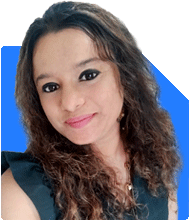40, No Savings, No Career - Can I Secure My Future?
Ramalingam Kalirajan |7928 Answers |Ask -Follow
Mutual Funds, Financial Planning Expert - Answered on Jan 30, 2025
He has an MBA in finance from the University of Madras and is a certified financial planner.
He is the director and chief financial planner at Holistic Investment, a Chennai-based firm that offers financial planning and wealth management advice.... more

I am 40 years old with no savings, and monthly income of 55k , due to some reasons I couldn't achieve anything in terms of education and career. I have no idea about my future .any suggestions My investment: I have 10000 sqft plot near pune and 1 bhk flat ( father's owned) Currently I am living with my parents and wife and 2 kids.
Your monthly income is Rs. 55,000.
You live with your parents, wife, and two kids.
You own a 10,000 sq. ft. plot near Pune.
Your father owns a 1BHK flat where you currently reside.
You are uncertain about your financial future.
Immediate Financial Actions
Start Saving Immediately
You must start saving at least 20% of your income.
Open a separate bank account for savings.
Avoid spending on unnecessary things.
Create an Emergency Fund
Keep at least 6 months of expenses in a bank FD.
This will protect you from financial shocks.
Avoid New Loans
Do not take loans for lifestyle expenses.
Borrow only if there is an emergency.
Building a Strong Financial Future
Increase Your Income
Learn new skills that can help you earn more.
Consider freelancing, part-time work, or side businesses.
Look for better job opportunities with a higher salary.
Invest for Growth
Start investing small amounts in mutual funds through SIP.
Choose actively managed funds for better returns.
Increase investments as your income grows.
Secure Your Family’s Future
Buy a term insurance plan with a good cover.
Get a health insurance plan for your family.
Avoid policies that mix insurance and investment.
Dealing with Existing Property
Avoid Real Estate as an Investment
Your 10,000 sq. ft. plot should not be your primary investment.
Real estate is not a liquid asset and takes time to sell.
Focus on building liquid investments instead.
Keep the 1BHK for Stability
You already have a home, which reduces financial pressure.
Instead of buying another property, invest in mutual funds.
Final Insights
Your financial journey starts now.
Save at least 20% of your income and invest regularly.
Increase your income through skill-building and career growth.
Build an emergency fund and secure insurance coverage.
Avoid making real estate your primary investment.
You can still achieve financial security with discipline.
Best Regards,
K. Ramalingam, MBA, CFP,
Chief Financial Planner,
www.holisticinvestment.in
https://www.youtube.com/@HolisticInvestment
Look for online certifications or part-time work to improve financial stability.
Cut unnecessary expenses and build savings despite the rent burden.
Stay consistent with investments, even if small, to create long-term security.
Best Regards,
K. Ramalingam, MBA, CFP,
Chief Financial Planner,
www.holisticinvestment.in
https://www.youtube.com/@HolisticInvestment
You may like to see similar questions and answers below
Ramalingam Kalirajan |7928 Answers |Ask -Follow
Mutual Funds, Financial Planning Expert - Answered on Jul 27, 2024
Ramalingam Kalirajan |7928 Answers |Ask -Follow
Mutual Funds, Financial Planning Expert - Answered on Aug 03, 2024
Ramalingam Kalirajan |7928 Answers |Ask -Follow
Mutual Funds, Financial Planning Expert - Answered on Jan 29, 2025
Anu Krishna |1496 Answers |Ask -Follow
Relationships Expert, Mind Coach - Answered on Feb 11, 2025
Ramalingam Kalirajan |7928 Answers |Ask -Follow
Mutual Funds, Financial Planning Expert - Answered on Feb 11, 2025
Milind Vadjikar |999 Answers |Ask -Follow
Insurance, Stocks, MF, PF Expert - Answered on Feb 11, 2025
Ramalingam Kalirajan |7928 Answers |Ask -Follow
Mutual Funds, Financial Planning Expert - Answered on Feb 11, 2025
Vivek Lala |305 Answers |Ask -Follow
Tax, MF Expert - Answered on Feb 11, 2025
Ramalingam Kalirajan |7928 Answers |Ask -Follow
Mutual Funds, Financial Planning Expert - Answered on Feb 11, 2025
Jinal Mehta |96 Answers |Ask -Follow
Financial Planner - Answered on Feb 11, 2025
Ramalingam Kalirajan |7928 Answers |Ask -Follow
Mutual Funds, Financial Planning Expert - Answered on Feb 11, 2025
Milind Vadjikar |999 Answers |Ask -Follow
Insurance, Stocks, MF, PF Expert - Answered on Feb 11, 2025
Ramalingam Kalirajan |7928 Answers |Ask -Follow
Mutual Funds, Financial Planning Expert - Answered on Feb 11, 2025















